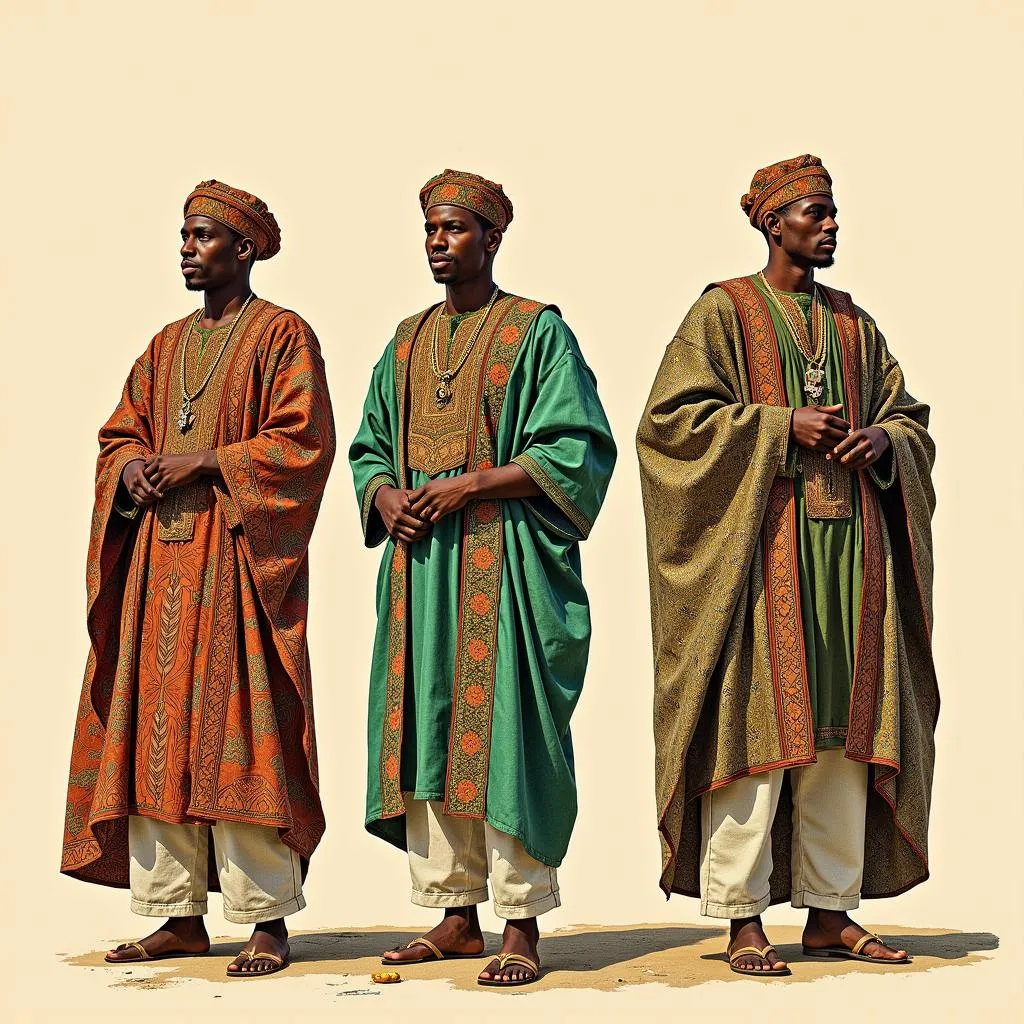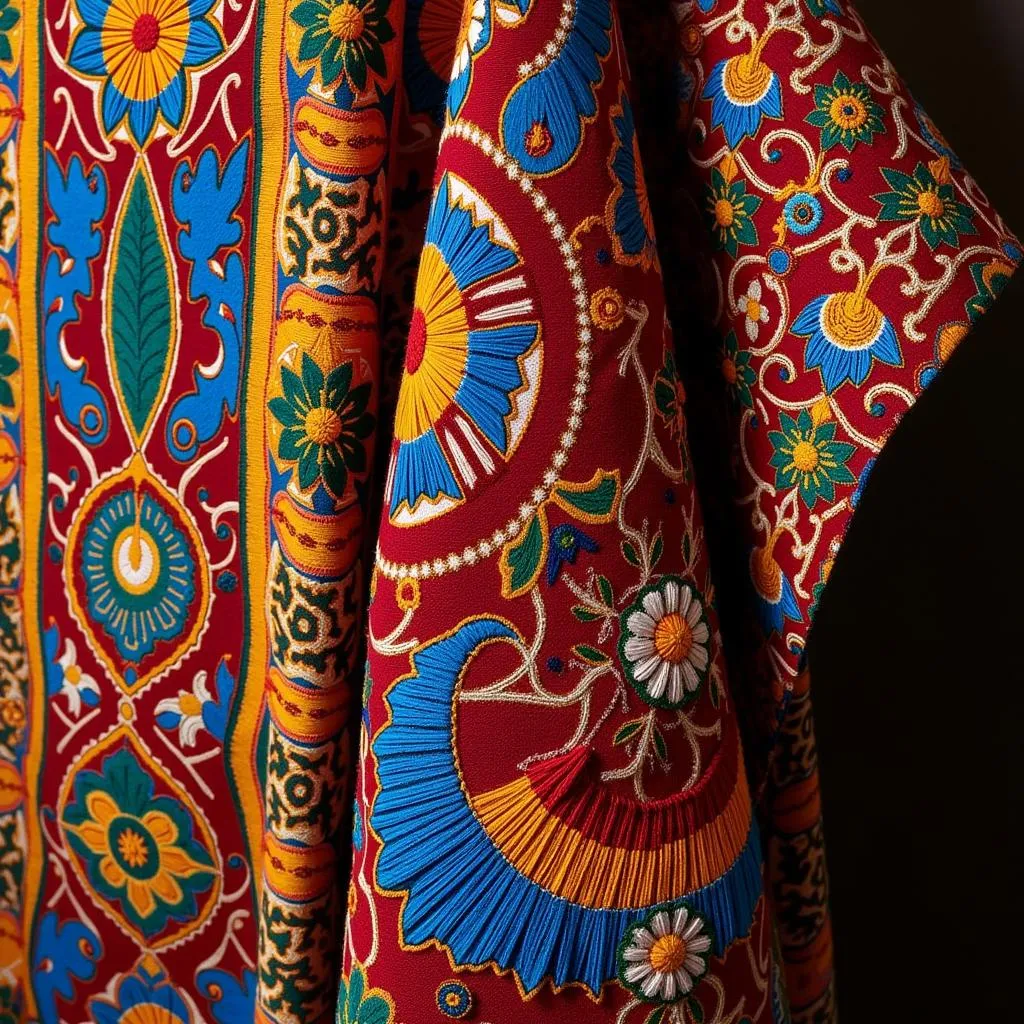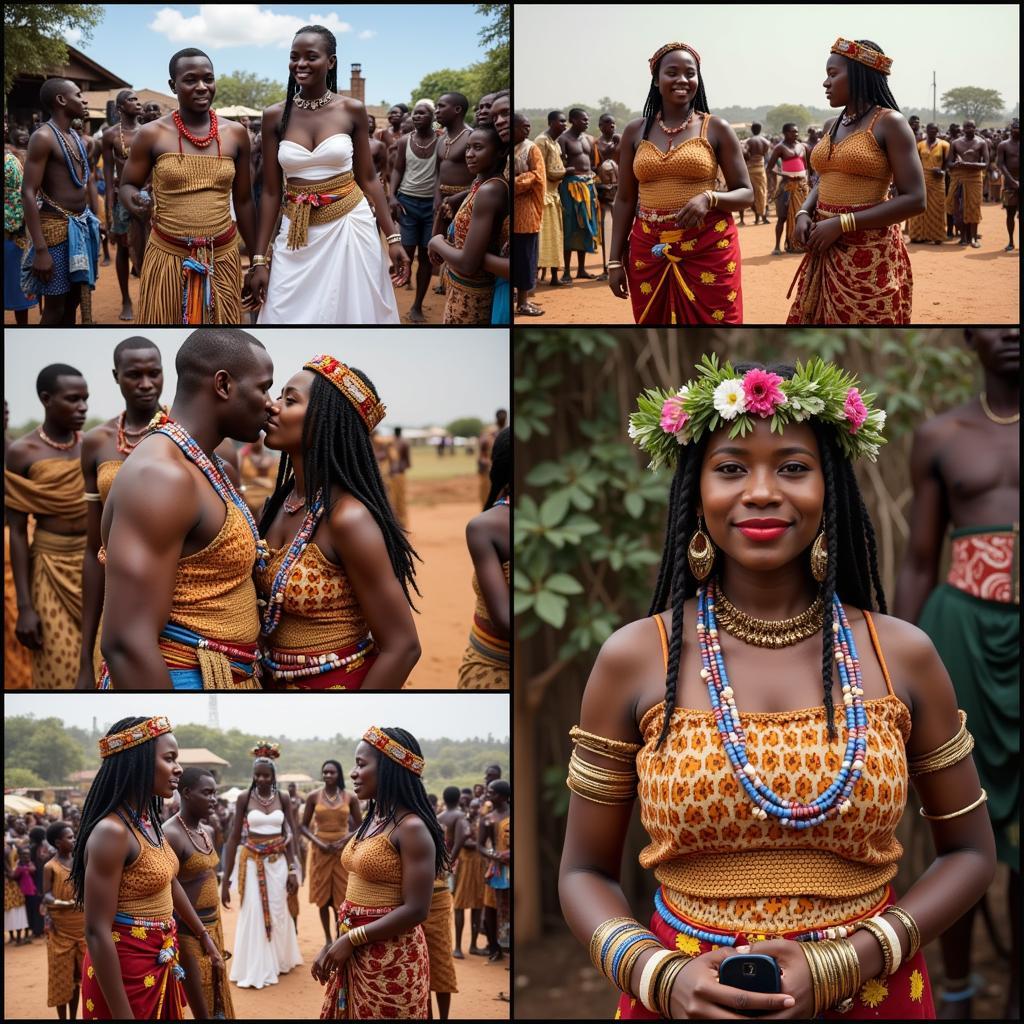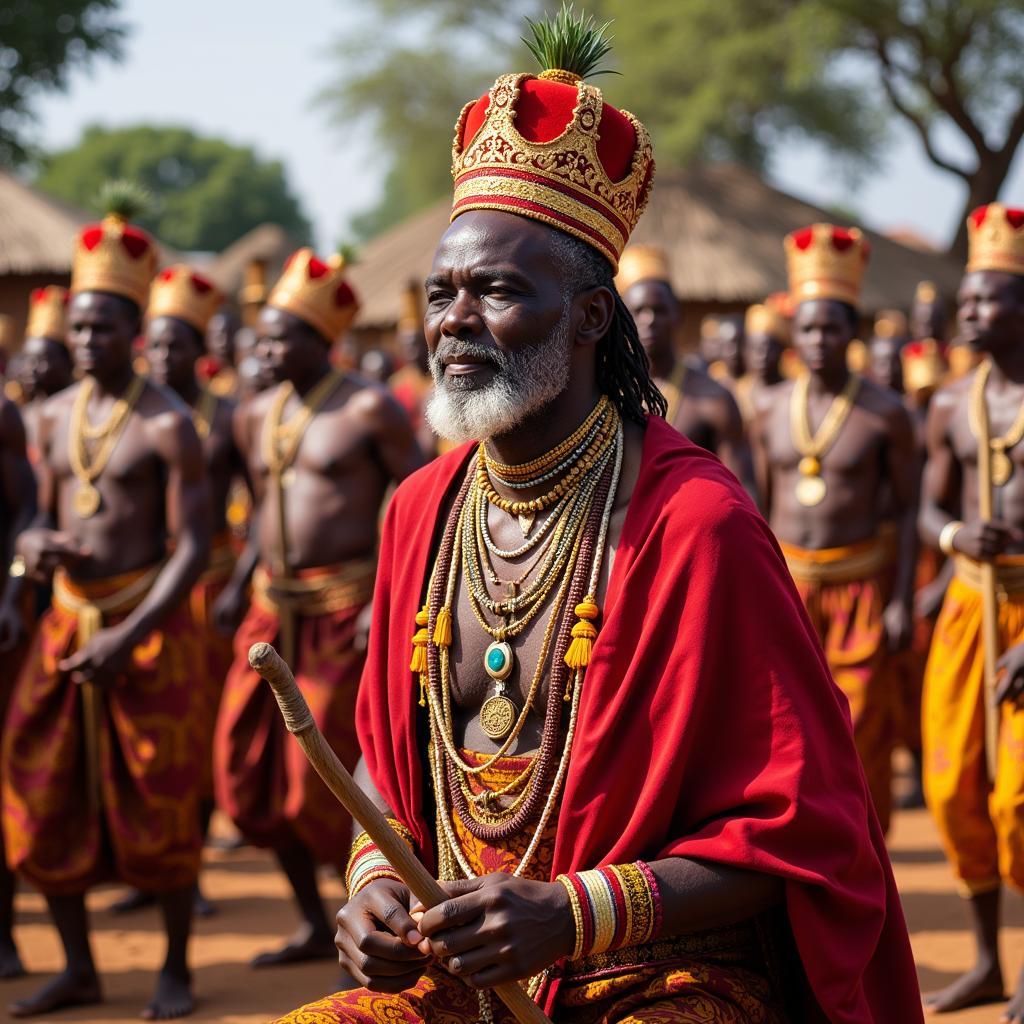The Majestic African Agbada: A Symbol of Tradition, Power and Prestige
The African Agbada, a flowing wide-sleeved robe worn by men in much of West Africa, is more than just clothing. It’s a powerful statement of tradition, status, and cultural pride. This elaborate attire, often crafted from vibrantly colored and richly textured fabrics, tells a story that echoes through generations.
Unveiling the Agbada: A Closer Look at its History and Significance
The agbada’s origins can be traced back centuries, with roots in the ancient empires of West Africa. It’s believed to have evolved from the flowing garments worn by traders and dignitaries who traversed the trans-Saharan trade routes. These routes, connecting North Africa to the sub-Saharan region, were not only pathways for commerce but also conduits for cultural exchange. As a result, the agbada, while predominantly West African, carries whispers of influences from the Arab world and beyond.
 Men in traditional agbada in a historical setting
Men in traditional agbada in a historical setting
Over time, the agbada transitioned from a garment of practicality to a symbol of social standing. Kings, chiefs, and wealthy merchants adopted the agbada as a marker of their status, commissioning elaborate designs and using luxurious fabrics to distinguish themselves. The more opulent the agbada, the higher the wearer’s position within society. This association with power and prestige continues to resonate today.
The Art of Adornment: Exploring the Fabrics and Styles of the Agbada
An agbada ensemble typically comprises three pieces: the boubou, a large flowing robe; the Sokoto, a pair of matching trousers; and the fila, a cap that completes the look. While this basic structure remains consistent, the variations in fabric, embroidery, and style are endless.
 Close-up of intricate embroidery on an agbada
Close-up of intricate embroidery on an agbada
Handwoven fabrics like Aso Oke, woven from cotton grown in West Africa, are highly prized for their texture and durability. Silk, imported from countries like India and China, adds a touch of luxury. And then there are the colors. Rich blues, signifying royalty and wisdom, vibrant greens representing prosperity, and bold reds associated with power, all come together to create a visual feast for the eyes.
The Agbada in the 21st Century: Tradition Meets Modernity
Today, the agbada continues to hold a revered place in West African society. It’s a staple at weddings, religious ceremonies, and cultural festivals. However, the agbada is no longer confined to traditional settings. Contemporary designers are reinventing this classic attire, incorporating modern cuts, experimenting with unconventional fabrics, and adding their own unique flair.
This evolution has seen the agbada grace international runways, featured in fashion magazines, and even embraced by celebrities around the world. This fusion of tradition and modernity ensures that the agbada remains relevant, capturing the spirit of contemporary Africa while honoring its rich heritage.
The Agbada: More Than Just a Garment, It’s a Legacy
The African agbada is more than just a piece of clothing. It is a tangible representation of history, artistry, and cultural identity. It embodies the spirit of a continent, reflecting its vibrant traditions and its dynamic present. With each stitch and every fold, the agbada tells a story, a story that continues to be written with every passing generation.
FAQs about the African Agbada
What is the significance of the agbada’s colors?
The colors used in an agbada hold deep cultural meanings. For example, blue often represents royalty and wisdom, while green symbolizes prosperity and growth.
Is the agbada only worn for special occasions?
While commonly seen at weddings and cultural events, the agbada can also be worn for important gatherings or as a way to showcase cultural pride in everyday life.
Are there different styles of agbada?
Yes, the agbada varies in style and design across different West African countries and ethnic groups. Each region has its unique interpretations and embellishments.
Do you need to be of West African descent to wear an agbada?
While the agbada is deeply rooted in West African culture, it is increasingly being appreciated and worn by people from diverse backgrounds as a symbol of respect and admiration for the culture.
Need More Information on African Culture?
Explore our articles on African countries to migrate to and the African capital cities list to delve deeper into the diverse cultural landscape of this captivating continent.
Contact us at +255768904061, email kaka.mag@gmail.com, or visit our office in Mbarali DC Mawindi, Kangaga, Tanzania, for any inquiries. Our 24/7 customer support team is here to assist you.


